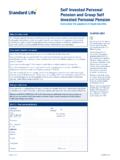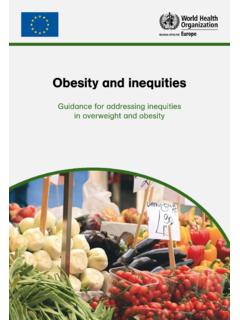Transcription of Revisiting the Pivot: The Influence of Heartland Theory in ...
1 Revisiting the pivot : The Influence of Heartland Theory in Great Power Politics By Margaret Scott and Westenley Alcenat Macalester College May 9th, 2008. _____. Abstract: In a 1990 document for National Security Strategy, the first Bush Administration noted that for most of the century, the United States has deemed it a vital interest to prevent any power or group of powers from dominating the Eurasian landmass. 1 This statement is closely aligned to the geopolitical paradigm of Halford Mackinder's Heartland Theory , which states that the power that controls Central Asia the great pivot would eventually emerge as the most powerful state in international politics. This paper reassesses the Theory in the context of today's foreign policy by examining , Russian, China, and European Union policy towards Central Asia.
2 The purpose of the paper is to analytically determine the extent to which the Theory is still influential in contemporary world politics. The paper is thus formulated around a fundamental question: to what extent is the Heartland Theory influential in the current foreign policy of the four great powers , , Russia and China? The paper ends by concluding that there is substantial evidence of Mackinderian philosophy in the discourse of geopolitics in Central Asia. 1. Fettweis J. C (2003). Revisiting Mackinder and Angell: The Obsolescence of Great Power Politics.. Comparative Strategy, 22:109-129. Alcenat and Scott Page 1 of 28. I. INTRODUCTION: In 1904, British geographer Halford Mackinder reintroduced the concept of geopolitics to international politics via his Heartland Theory .
3 In a thesis titled The Geographical pivot of History, Mackinder theorized that: In the industrial age, the natural resources of Central Asia the great pivot ' are so vast that it will serve as the geostrategic instrument for the state that controls it to become the empire of the world.' 2. Today, the Heartland consists of Russia, the former Soviet Republics of Central Asia (Kazakhstan, Kyrgyzstan, Tajikistan, Turkmenistan, and Uzbekistan) and is marked by the Caspian basin. 3 After the Soviet Union dissolved in 1991, the Central Asian states followed suit by declaring independence. These new republics constitute the modern core of the pivot area of Mackinder's thesis and are therefore pivotal in any geo-strategic analysis concerning the Heartland .
4 Russia is, and historically has been, the regional hegemon of the Heartland . However, that Influence is being contested by the United States ( ). That challenge is made explicit in a leaked 1992 Pentagon document: Our first objective is to prevent the reemergence of a rival that poses a threat on the territory of the former Soviet Union. This is a dominant consideration and requires that we endeavor to prevent any hostile power from dominating a region whose resources would, under consolidated control, be sufficient to generate global power Our strategy must now refocus on precluding the emergence of any potential future global competitor. 4. This paper reassesses the foreign policy of the , the European Union ( ), Russia, and China towards Central Asia by examining them in the context of Mackinder's Theory .
5 In effect, the central formulation of the paper rests on this research question: to what extent is the Heartland Theory influential in the current foreign policy of the four 2. Mackinder, H. J. The Geographical pivot of History in Democratic Ideals and Reality. Norton and Company. New York, , 1962. 241. 3. See background section for an in-depth description of the Heartland map. 4. Olcott B. Martha (Summer 1998). The Caspian's False Promise. Foreign Policy, No. 111. 94-113. Alcenat and Scott Page 2 of 28. great powers , , Russia and China? Consequently, the analysis takes an East vs. West approach, albeit the end of the Cold War. The premise is to find and understand the relevance of Mackinderian analysis in contemporary foreign policy discourse.
6 Initially, the paper provides a brief background to the Theory and the region. This is followed by a thorough review of the current literatures on foreign policy in Central Asia. Thirdly, it compares and contrasts the various literatures by analyzing their use of geostrategic concepts to explain foreign policy issues involving Central Asia. Ultimately, the conclusion of the paper states that Central Asia is significant in the foreign policies of the great powers because of its natural resources, the need to secure market access to those very resources, and its geo-strategic location in the war on terror. The Heartland Theory is therefore influential to the extent that foreign policy towards the region is still formulated with a conscious outlook for geopolitical advantage.
7 II. BACKGROUND: The Heartland Theory Mackinder's Heartland Theory dates back over a century. The Theory engages geography in international politics both literally and figuratively. Literally, the Theory centers on the concept of a pivot area/ Heartland , a sizeable region in Eurasia over which regional political control by a given country will in turn determine that country's supremacy over world politics. Figuratively, the Theory presents a narrow and deterministic view of international politics as solely a function of geographical resources. The basic premise of the Theory is as follows. Who rules East Europe commands the Heartland ;. Who rules the Heartland commands the World-island.
8 Who rules the World-island commands the World. 5. 5. Mackinder, H. J., 1962, 261. Alcenat and Scott Page 3 of 28. Mackinder emphasizes ruling Eastern Europe as a locus whereby geostrategic access to the Heartland is better facilitated and augmented. A map of the area is presented below. As Mackinder designated, the pivot area extends throughout much of the Eurasian continent. ( Geographic pivot of History, 1904). The Heartland Theory is essentially geographical in its outlook, thus citing a critical geostrategic link between land control and political power, geopolitical power. Mackinder makes this connection in the presentation of his thesis, The Geographical pivot of History, to the 1904 Royal Geographical Society meeting: The actual balance of political power at any given time is, of course, the product, on one the one hand, of geographical conditions, both economic and strategic, and, on the other hand, of the relative number, virility, equipment, and organization of the competing peoples.
9 6. Although Mackinder's Theory has received a great deal of criticism in the decades since its publication, this paper does not seek to address the Theory from a critical viewpoint. Rather, the aim is to apply the Theory in the context of the contemporary environment of international politics, with the hope of examining the importance of Central Asia in the geopolitics of great-powers. The analysis therefore revolves around the application of 6. Mackinder, H. J. 1904. The Geographical pivot of History. The Geographical Journal 23: 421 437. Alcenat and Scott Page 4 of 28. and the implications posed by Mackinderian geopolitical philosophy when formulating foreign policy towards Central Asia, the pivot .
10 Central Asia The modern day pivot area examined here is Central Asia. The Central Asian region comprises five former Soviet republics, now independent states. The central five are: Kazakhstan, Kyrgyzstan, Tajikistan, Turkmenistan, and Uzbekistan. Pictured in the map below, these five states encompass a broad expanse of land at the heart, in accordance with Mackinder's Theory , of the Eurasian continent. (University of Texas, 2002). This region has become significant in recent decades because of the emergence of these states in the post-Soviet era, having only recently gained independence in the early 1990s. Before gaining independence from the , these states lacked political Influence in regional politics and were coercively managed under Stalinist rule.


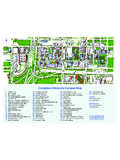
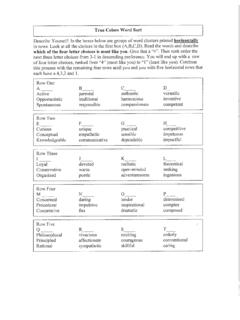



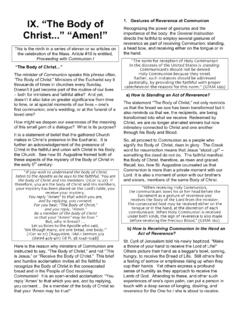
![Hearing protection [Read-Only] - Creighton University](/cache/preview/9/6/e/e/8/f/d/c/thumb-96ee8fdc2111eb2b05b9b613f7af1575.jpg)


